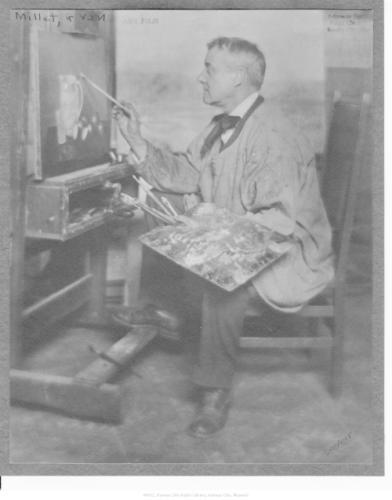George Van Millett

Native Americans on horseback, steamboats at the levee and early frontier characters were some of the first subjects for artist George Van Millett, who spent his life painting the people and scenes of Kansas City.
Van Millett was born April 5, 1864 in Kansas City; his parents were among the city’s first settlers. His father, Henry S. Millett, a printer and newspaperman, named "Van" after his close friend and business associate, Robert T. Van Horn. As a young man, Van learned the printing business, but his ambitions were far beyond setting type and illustrating newspaper articles.
In 1886, Van Millett decided to pursue art in Europe, where he studied at the Royal Academy in Munich. He returned five years later and set up a studio downtown. In 1896, he co-founded the Paint Club and worked to combine it with the Sketch Club and Fine Arts Institute, where he was an instructor. He’s credited with planting the seeds for the organizations that would later form the nucleus of the Kansas City Art Institute.
An energetic advocate for art appreciation and the establishment of a permanent collection of art in Kansas City, Van Millet served on the municipal art commission for many years. An expert in restoration, he was in charge of the Western Gallery of Art at the public library before the construction of the Nelson-Atkins Museum of Art.
During his lifetime, Van Millett painted more than 175 portraits of the city’s most prominent citizens including R. T. Van Horn, Nathan Scarritt, John C. McCoy, Thomas Swope, U.S. Epperson and William Volker. His landscapes featuring rural Missouri, the Ozarks and domestic scenes capture the spirit of Kansas City, the Midwest and the outdoor life he loved.
Van Millett lived and painted at his Brookside home until well into his 80s. He died January 15, 1953.
A version of this article previously appeared at http://www.kchistory.org/content/biography-george-van-millett-1864-1953-...
This work is licensed under a Creative Commons Attribution-NonCommercial-NoDerivatives 4.0 International License.
